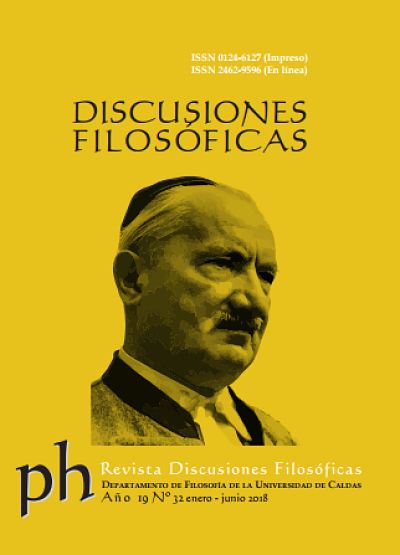Autores/as
Resumen
El sí mismo [self, Selbst] ha sido un principio explicativo para comprender la conciencia en su carácter subjetivo. El presente trabajo analiza lo que Gallagher ha denominado el sí mismo mínimo, su núcleo esencial, en sus dos modalidades separables de experiencia: el sentido de propiedad y el sentido de agencia. Se ofrecen algunas objeciones a esta distinción tajante, que, a su vez, hace del sentido de propiedad el aspecto fundante. La fenomenología de experiencias normales (movimientos involuntarios o pensamientos espontáneos) y patológicas (la inserción de pensamientos o el delirio de control) nos conducirían al componente esencial de la naturaleza agencial del sí mismo: la intencionalidad, esto es, un carácter o capacidad relacional. Este parecería permanecer incluso en patologías extremas, por lo que podría proponerse que el sentido mínimo y fundamental de sí mismo no estaría originariamente ligado ni a neuronas o movimientos ni a estados psicológicos de conciencia.
Citas
Claesges, Ulrich. Edmund Husserls Theorie der Raumkonstitution. Den Haag: Martinus Nijhoff, Parts II and III (55–144), 1964. Print.
De Haan, Saneke & Leon de Bruin. “Reconstructing the minimal self, or how to make sense of agency and ownership”, Phenomenology and the Cognitive Sciences 9, 2010:373–396. Print.
Frankfurt, Harry. The Importance of What We Care About: Philosophical Essays. Cambridge: Cambridge University Press, 1988. Print.
Fuchs, Thomas. Psychopathologie von Leib und Raum. Darmstadt: Steinkopff Verlag, 2000. Print.
Gallagher, Shaun. “Philosophical conceptions of the self: Implications for cognitive science”. Trends in cognitive science, 4 (1), 2000: 14-21. Print.
---. “Self-reference and schizophrenia: A cognitive model of immunity to error through misidentification”. Exploring the self: Philosophical and psychopathological perspectives on self-experience. Amsterdam: John Benjamins, 2000. Print.
---. How the body shapes the mind. Oxford: Oxford University Press, 2005. Print.
---. “Where's the action? Epiphenomenalism and the problem of free will”. Cause behavior? An investigation of the nature of volition. Cambridge: MIT Press, 2006. Print.
---. “Sense of agency and higher-order cognition: Levels of explanation for Schizophrenia”. Cognitive Semiotics. Jan, 2007: 32-48. Print.
---. “The natural philosophy of agency”. Philosophy Compass. Feb, 2007: 1-11. Print.
Graham, George and G. Lynn Stephens. “Mind and mine”. Philosophical psychopathology. Cambridge: MIT Press, 1994. Print.
James, William. The principles of psychology, repr. 1950. New York: Dover, 1980. Print.
Merleau-Ponty, Maurice. Le visible etl'invisible. Paris: Gallimard, 1964. Print.
Metzinger, Thomas. Being No One. Cambridge, Mass.: MIT Press, 2003. Print.
Neisser Ulric & Robyn Fivush. The remembering self: Construction and accuracy in the self-narrative. Cambridge: Cambridge University Press, 2008. Print.
Ricoeur, Paul. Sí mismo como otro. México/Buenos Aires/Madrid: Siglo XXI Editores, 2006. Print.
Scharfetter, C and G Benedetti. “Leiborientierte Therapie schizophrener Ich-Störungen“. Schweizer Archiv Fur Neurologie, Neurochirurgie Und Psychiatrie. 123, 1978: 239-255. Print.
Taylor, Charles. Sources of the Self. The Making of the Modern Identity. Cambridge: Cambridge University Press, 1989. Print.

 pdf
pdf
 FLIP
FLIP

























